
If you’re a fish-fan, then sooner or later the prospect of breeding your own is almost certainly going to appeal – always assuming your fish haven’t already beaten you to it, and started producing ‘tiddlers’ all by themselves!
There’s nothing particularly difficult about breeding fish in your own back garden – at least not in principle – and left to their own devices, generations of goldfish have been simply getting on with the business of reproduction without the need for any assistance from us. Never-the-less, if you are set on helping nature on its way, here are a few simple ways to increase the chances of getting started producing your own, home-grown fish.
More: We have a great article on how to encourage koi to spawn here
Pond Conditions
First, take a look at your pond. Good water quality and adequate aeration are essential prerequisites, so if it’s heading towards summer and you haven’t tested your water in a while, now’s a good time to check everything is well before the breeding season gets under way. Make sure your filter system’s working properly too, changing the UV bulb if necessary; goldfish don’t need clear water to breed, but you’ll doubtless want to be able to keep an eye on what’s going on!
Good planting within the pond is another important consideration, both to provide the fish with a good spawning site where their eggs can stick to the submerged leaves and as a protected nursery for the fry that ultimately emerge. Unfortunately many fish have cannibalistic tendencies and will happily eat their own eggs and offspring, so having an area of relative safety where the youngsters can hide out and grow is a crucial part of the proceedings.
The Fish Themselves
Obviously you need both males and females, so check to see that you do; although not all kinds of fish are the same, as a general rule, males tend to be more streamlined, with larger and more showy fins, while females appear rounder and more sedate in the fin department. It’s usually easy to get the hang of this with a bit of practice, but if you’re still not convinced, it’s probably worth asking a knowledgeable fellow-keeper to make sure you’re on the right track.
Some fish breeders suggest that the males should outnumber the females, while others point to the physical exhaustion caused by having females permanently pestered by amorous suitors – especially with koi. On balance, a slight male-bias is probably advisable, but do keep a watch to make sure that things don’t get too rough; highly stressed, worn-out females hardly make for the most successful spawning!
Equally obviously, they also have to be sexually mature. This is another thing which varies with species; for goldfish, for instance, this means over two years old, while koi aren’t ready to breed until they are at least twice that age.
Raising Baby
If you’ve got all these prerequisites right, the males have, with varying degrees of aggression, chased the females around for a while, and they have in turn responded by shedding their eggs for fertilisation, all that remains is for the eager fish-breeder to wait for them to hatch. Fortunately you don’t have to wait long; although it is temperature dependent, as a general rule for example, goldfish fry appear within two or three days – although they take about as long again to begin to look like proper fish, and as much as a year to develop their final colour. Many a novice breeder has wondered why there are no young goldfish and what kind of fish has produced all those brown babies!
Their nursery area will provide plenty of useful natural food for the young, but it is important to provide a good quality, specialist fry food to ensure they get all the minerals, vitamins and nutrients they need to keep them healthy at this stage of their lives. Growth is usually quite rapid in the early days and weeks in most species of pond fish – it’s nature’s way of helping them to avoid falling foul of all those hungry mouths that share the pond with them!
Unfortunately it doesn’t always work and the harsh reality is that the odds of survival for any one individual are very poor, but the good news is that with so many eggs being produced, there’s a very good chance that at least some will make it to adulthood and breed themselves. It is, after all, a cycle that has been playing out for millennia – and one which can, with very little effort, allow you to enjoy the simple pleasure of fish breeding for yourself.
Pond Breeding FAQs
Where do fish lay their eggs in a pond?
Underwater vegetation such as leaves, stems, and roots create a secure environment for fish to lay their eggs in your pond. Once hatched, the plants offer fry protection, food, and shelter. Incorporating submerged plants into your fish pond or water garden is a simple way to enhance it.
Will baby goldfish thrive in a pond?
Goldfish can live for many years and can grow to be 8-12 inches long during their first few years of life. Newly hatched goldfish, including baby goldfish, can survive and thrive in outdoor ponds located in North America, Asia, and Europe.
How can I encourage goldfish breeding in my pond?
Temperature changes are a typical environmental cue for spawning that you can replicate in your goldfish breeding setup. Start by lowering the temperature of your tank to 10°C/50°F to 12°C/54°F. When you’re ready to begin breeding, raise the temperature gradually by 2°C/3°F each day until it reaches 20°C/68°F to 23°C/74°F.
When do fish typically mate?
Fish breeding usually happens when the water temperature reaches at least 18°C. Although spawning commonly takes place in May or June, timing is determined by climate conditions and location. Females usually lay their eggs on weeds, submerged roots, and similar surfaces.
Can carp breed in ponds?
When hundreds of large female carp breed simultaneously in a pond, they can produce a massive number of eggs. A single large female carp can lay a vast quantity of eggs on her own, leading to millions of eggs being produced within a few days.
How do you induce a fish to breed?
Many fish species are naturally induced to breed during the spring season when water temperatures rise, and there are longer periods of daylight. In an aquarium, the same effect can be achieved through various measures, such as increasing the temperature setting on the thermometer, regular water changes, and gradually lengthening the time the aquarium lights are turned on. By replicating these conditions, you can trigger fish to breed in your aquarium throughout the year.
What month do pond fish breed?
Fish spawning typically occurs in May or June when the water temperature reaches a particular level. It is usual to observe a lot of activity in the pond when fish are spawning, and the water may become murky or foamy. It is recommended not to disturb the pond environment at this time. The water temperature in your pond is the primary factor that will determine the spawning season, which may vary depending on your location and the weather conditions. So, it is necessary to maintain optimal pond conditions that include stable water temperature, good water quality, and a healthy fish population, to maximize breeding chances.
How do you know if a pond fish is pregnant?
You can check if a fish is pregnant by looking for clear eggs in the water. The eggs may be attached to plants or other objects in the pond water. However, adult fish may eat some of the eggs before they can be checked. To ensure that the eggs are not eaten, spawning mops or breeding nets can be used to protect the eggs until they hatch. Another way to know if your fish are pregnant is to observe any changes in their physical appearance, such as a distended abdomen, which may indicate that they are carrying eggs.
How do you get pond fish to spawn?
Pond fish usually spawn when the water temperature is between 50º and 70º Fahrenheit. While a warm spring day with temperatures up to 80º Fahrenheit may seem ideal, spawning will not occur unless the water temperature is within the optimal range. You can maintain the ideal temperature by installing a pond heater or simply waiting until the natural seasonal changes bring the temperature into the correct range. Additionally, ensuring that the water quality is optimal, the fish are healthy and well-fed, and the pond environment is suitable, will increase the chances of successful spawning.
What time of year do goldfish spawn in a pond?
Goldfish spawning occurs naturally in late spring and early summer. The cold winter months followed by a sudden increase in temperature during spring signals to their bodies that it’s time to spawn. Once the air temperature starts to rise, it’s important to watch for spawning behaviour if you keep goldfish in a pond.
What triggers fish to spawn?
Spawning triggers are environmental signals that induce marine animals to breed. These cues usually involve sudden changes in their surroundings, such as shifts in temperature, salinity, and/or food abundance. Environmental changes that signal the arrival of a new season or annual migration patterns can also induce fish spawning.
Can koi breed in a pond?
Koi and goldfish start spawning in late spring to early summer, usually when the water temperature reaches around 20°C. During spawning, they produce thousands of eggs, but only a few survive to become baby fish. Koi breed quite easily in ponds and do not require special conditions to reproduce.
Can fish reproduce in a pond?
Most goldfish reproduce easily in ponds, especially in the spring when the weather begins to warm up. During spawning, they lay adhesive eggs on aquatic plants that hatch within two to three days, releasing tiny fry that are only a few millimeters in length. If the water temperature is between 15-25°C, the eggs will hatch more quickly, and the fry will grow more rapidly.
Why are my pond goldfish chasing each other?
Goldfish may chase each other for a variety of reasons, including establishing dominance, mating behaviour, or competition for food. However, if the pond is overcrowded, there may be a lack of space and resources which can cause stress and aggression between the fish. To prevent this behaviour, ensure the pond is appropriately sized for the number of fish and provide plenty of hiding places and feeding areas.
How long are pond fish pregnant for?
Pond fish do not get pregnant as they lay eggs rather than giving birth to live young. After spawning, it can take anywhere from a few days to a few weeks for the eggs to hatch, depending on the species and environmental conditions. Once the fry hatch, they will typically spend a period of time in an egg sac before they are able to swim and feed on their own.
What pond fish give live birth?
Livebearing fish are a group of fish species that retain the eggs inside the body and give birth to live young. While most fish lay eggs, livebearing species include some types of guppies, mollies, platies, and swordtails. These fish are often popular choices for aquarium enthusiasts due to their colourful appearance and ease of care.
What can I do with too many goldfish in my pond?
If your pond has too many goldfish, one option is to donate them to a pet store, school or learning institution. Another option is to advertise them for free online or reach out to social media groups dedicated to aquariums and fishkeeping. It’s important not to release them into the wild or other bodies of water as they can cause ecological problems and endanger native species.
Last Modified: May 12, 2023
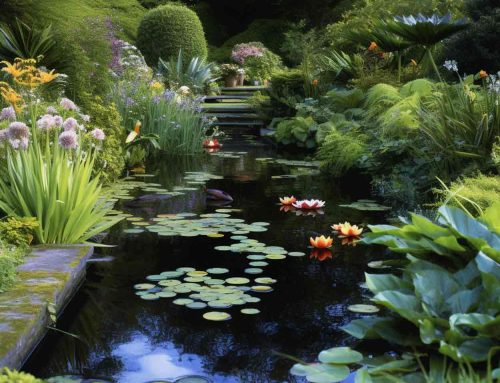
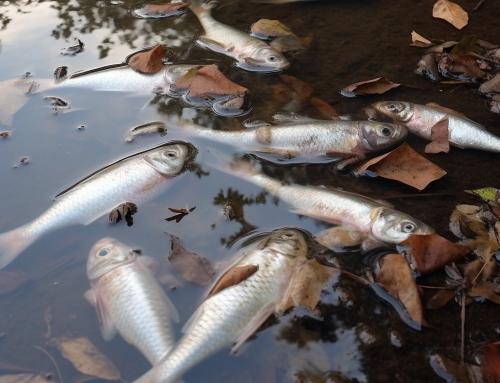
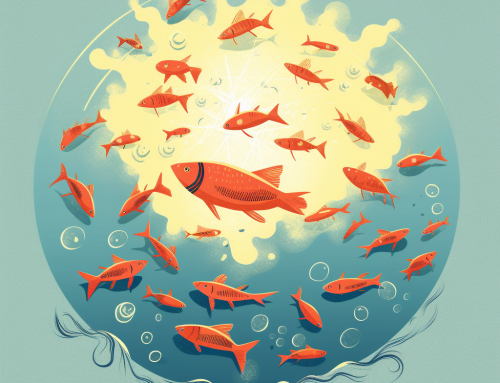
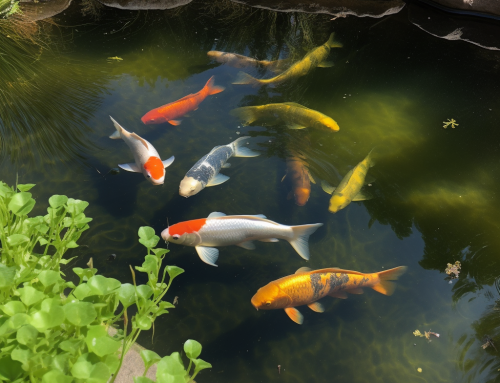


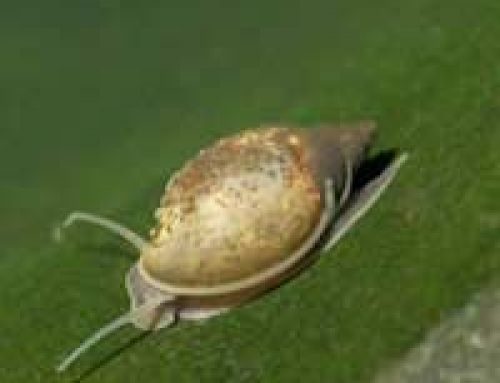

Advice please. I have recently had a lot of goldfish female deaths due to being constantly chased by males in my pond. What can I do about this.
I see the last question wasn’t asked but I will try another one just in case. I have a large outdoor pond and had a very fat looking fish, I can send a photo. I expected spawning to start in November in NZ. Although the water temperature is consisteconsistently around 20C . My fish is still fat and here we are into January with no signs of mating happening. Any suggestions?
I see the last question wasn’t answered but I will try another one justt in case. I have a large outdoor pond and had a very fat looking fish, I can send a photo. I expected spawning to start in November in NZ. Although the water temperature is consistently around 20C . My fish is still fat and here we are into January with no signs of mating happening. Any suggestions?